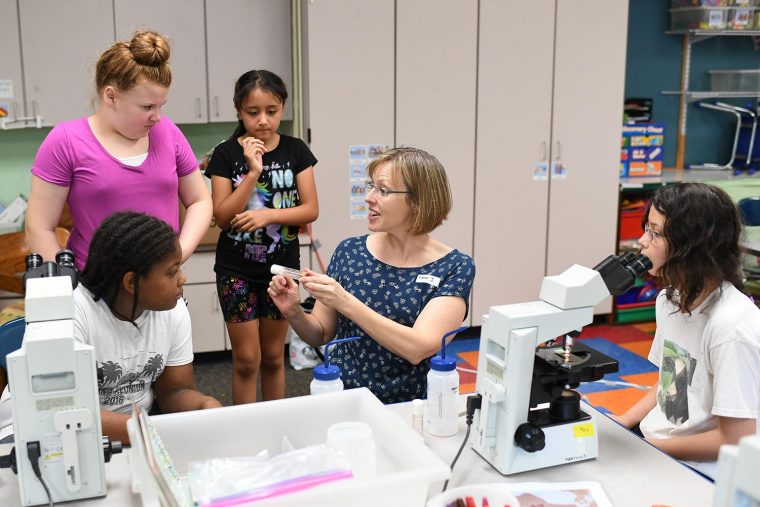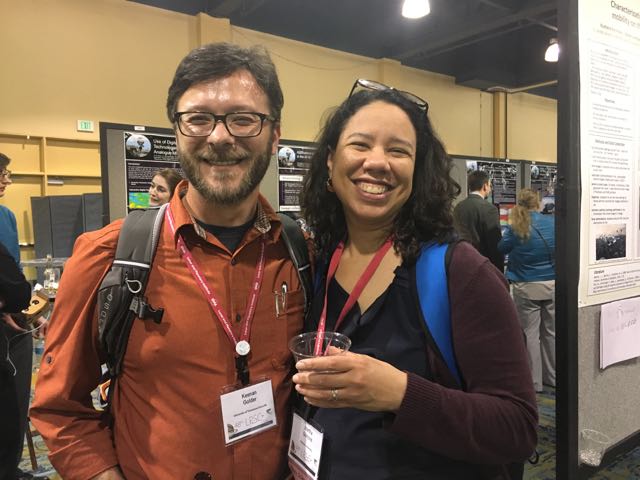In this recurring feature in The Wesleyan Connection, we highlight some of the latest news stories about Wesleyan and our alumni. Wesleyan in the News 1. The Washington Post: "How One College Is Helping Students Get Engaged in Elections—and, No, It’s Not Political" President Michael Roth writes about Wesleyan's initiative to engage students meaningfully in work in the public sphere ahead of the 2020 elections, and calls on other colleges and universities to do the same. He writes: "Now is the time for higher education leaders to commit their institutions to find their own paths for promoting student involvement in the…
Martha Gilmore, the George I. Seney Professor of Geology, professor of earth and environmental sciences, believes we have a lot to learn from studying Venus—yet the United States has not sent a mission to the Earth-sized planet since the early 1990s. That’s why Gilmore has proposed a major flagship mission concept study to assess whether Venus was ever a habitable planet by looking at its rocks and atmosphere. In October, NASA agreed to fund the planetary mission concept on Venus submitted by Gilmore, a planetary geologist, and colleagues at several other institutions, who come from varied disciplines. Gilmore, who is…
In this recurring feature in The Wesleyan Connection, we highlight some of the latest news stories about Wesleyan and our alumni. Wesleyan in the News The Hill: "Advice on Climate Policy for the 2020 Presidential Candidates" In this op-ed, Huffington Foundation Professor of Economics and Environmental Studies, Emeritus Gary Yohe and his coauthors write that they are encouraged by the "unprecedented attention being given to climate change among those vying for the 2020 Democratic presidential nomination" and offer words of advice for creating an ambitious but credible climate policy. 2. AINT — BAD: "Isabella Convertino" The photography of Isabella Convertino '20…
Four girls squint one eye and with the other eye gaze intently into a microscope. One says she sees caterpillars or string or pink spaghetti. Another says she sees small frogs. "You're actually looking at tissue that's been smashed," says Ruth Johnson, associate professor of biology. "Do you see those dark spots? Those are chromosomes." Johnson, a developmental biologist who studies how tissues and organs are shaped during development, is one of five Wesleyan faculty who taught workshops during the fifth annual Girls in Science Summer Camp, Aug. 6–10. The camp is open to all girls in grades 4, 5, and…
A group of Wesleyan faculty, students and alumni attended the 48th Lunar and Planetary Science Conference in The Woodland, Texas March 20-24. The annual conference unites 2,000 international specialists in petrology, geochemistry, geophysics, geology and astronomy to present their latest research in planetary science over the course of several days. Professor of Earth and Environmental Sciences and the George I. Seney Professor of Geology Martha Gilmore coordinated Wesleyan's group. While at the event, she presented her work on the oldest rocks on Venus and Mars gully analogues on Earth. A number of her current graduate and undergraduate students attended and several…
Bill Herbst, the John Monroe Van Vleck Professor of Astronomy; Martha Gilmore, the George I. Seney Professor of Geology; Wilson Cauley, a post-doctoral fellow; and Nicole Arulanantham MA ’15 are the co-authors of a paper forthcoming in The Astrophysical Journal. The paper is based on Arulanantham's thesis research at Wesleyan. The paper also was featured in the December newsletter of the Gemini Observatory, an international observatory based in Hawaii and Chile. “The subject of the paper, a star known as KH 15D, was recognized as an important and interesting object in the 1990s through observations made on the Wesleyan campus by undergraduate and graduate students,” Herbst explained.…






